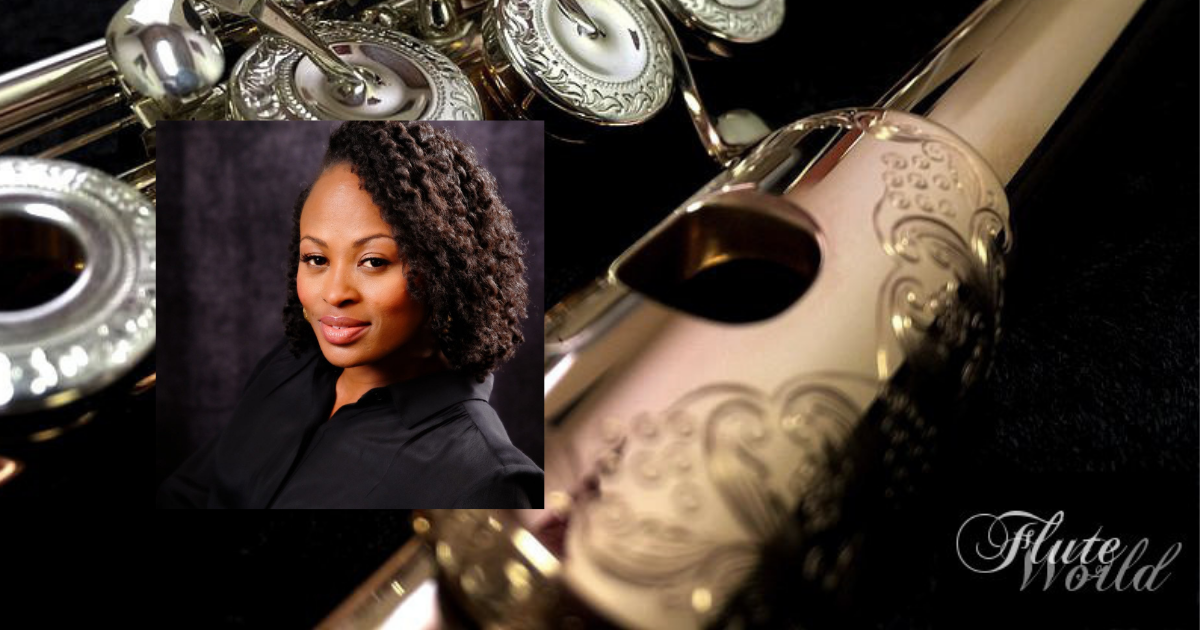
The World of Flute & Jazz
Sarah Hollandsworth at Flute World spoke to Lonnie Davis for Jazz Appreciation Month, to discuss how she got her start in jazz, the artists who influenced her jazz style, and what jazz music means to her. It’s an inspiring conversation with JazzArts Charlotte’s “powerhouse musician and entrepreneur”.
Below are a few excerpts of the conversation. Watch the full discussion on YouTube.
How did you get into jazz?
I’ve played an instrument all my life, although my first was the violin. I wanted to march in band, so I switched to flute, and fell in love from the beginning. It spoke to who I was. When I was accepted into the arts conservatory in New Orleans NOCCA, I can’t say I knew how to play jazz flute. I had some great educators at my fingertips who helped to share with me the role of flute in jazz.
The first jazz song I learned was Moe Koffman Swingin’ Shepherd Blues, a slow blues, perfect for a beginner jazz player. Blues is always great place to start. But jazz and music is a language you have to listen to a lot. So I immediately dove in to hear. It was helpful to hear different interpretations of the voice of the flute.
How has the last year impacted you as a performer and an organization?
For myself, I try to look at the positive, find the light. So for me, although there have been challenges certainly, it has been rewarding in a sense. With the extra time a year go on our hands, I focused on things I didn’t have the opportunity before, things we may take for granted in the hustle and bustle of regular circumstances. I spent a lot more time with family. I explored other arts projects that have nothing to do with music.
Organizational, this has given JazzArts Charlotte a clear focus on how we can support this local community of musicians even greater. We have put all our efforts toward supporting artists at this time. We launched a lot of programming virtual with musicians in mind: performance-based programs to feature and highlight the talent here and pay those artist for their time and skill. We also pushed intentional fundraising efforts to keep those individuals working. Even our educational programs have gone virtual, and expanded jazz academy to reach broader audiences and afford more musicians. We’ll move through summer continuing that and hopefully by fall will bring more in-person to bring the music to the community.
We have tried to use those opportunities as leverage to move forward in a major way. In the past several months, JazzArts Charlotte received a major investment from the Knight Foundation in technology, to grow digital programs beyond the pandemic. So we will continue to build digital content and reach digital audiences. It’s not going anywhere. We learned a new way to do things. It’s possible to reach audiences not geographically close, gives you more to participate in.
What advise do you give to a flutist curious about jazz?
For any young flutist or mature flutists out here, a great place to start jazz is to listen to other jazz flautists. The most challenging thing for me initially was to imagine the role of the flute in jazz. Despite being from New Orleans, didn’t grow up with it as part of a jazz repertoire. So I didn’t get into it until I studied jazz artists in later school. The first step is to understand the role of flute in a jazz ensemble. The flute in jazz plays many roles and styles: from Latin jazz like Dave Valetin, to bluesy like Herbie Mann, to some of the modern like Itai Kriss, one of my current favorites from Israel. There are a lot of entry points. Listening you will start to connect with that music and what role you can play with your voice.
Another step is to move the music stand out of the equation. Literally just play what you hear, along with a song you like. Try to find the melody on flute and rely on your ear. You might be surprised. As a kid, I would just try to play to cartoons, and then movie soundtracks. When I transitioned to jazz I knew I didn’t have to depend on music. Gain the confidence to play off the page, listen to your inner ear and match what you hear through your instrument.
Once you do that, you’re on your way.